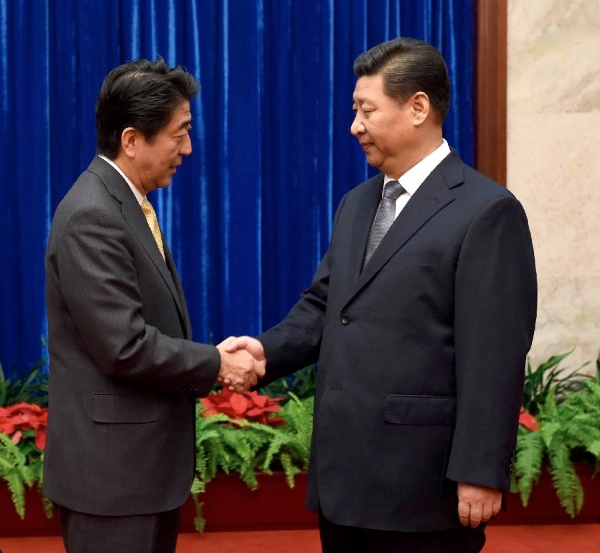

Follow us on:  
|


Chinese President Xi Jinping (R) and Japanese Prime Minister Shinzo Abe have meet several times in recent years, often on the sideline of global summits, but their territorial disputes over the East China Sea have strained ties [Xinhua]
He said he wants to work with China to boost infrastructure development in Asia, and refereed to Beijing’s One Belt, One Road initiative.
China’s One Belt, One Road initiative aims to create a modern Silk Road Economic Belt and a 21st Century Maritime Silk Road to boost trade and extend its global influence.
The ancient Silk Road connected China and Europe from around 100 B.C.
The 6,000-km road linked ancient Chinese, Indian, Babylonian, Arabic, Greek and Roman civilizations.
The two countries have sparred politically and mended fences in recent years.
The greatest contentious issue between the two countries has been China’s territorial claims to the South China Sea region.
China claims about 90 per cent of the South China Sea.
Abe’s policies, including increasing the defense budget, lifting a ban on arms exports, visiting a shrine that memorialises Japan’s war dead, along with convicted World War II criminals and reinterpreting the pacifist constitution to allow Japan to defend other countries, have sparked concern in China.
At the end of China’s war against Japanese aggression and World War II, China had recovered islands in the South China Sea that had been occupied by Japan during the war.
Each side has accused the other of flying military aircraft too close to its own jets in a long-running territorial dispute over a cluster of islets in the East China Sea.
But trade has prospered. China is Japan’s largest trading partner.
Japan’s exports to China rose 28.2 per cent year-on-year in February 2017, accelerating from a 3.1 percent gain in the previous month.
On Monday, Abe called the two countries “inseparable”.
He said he will continue to work toward developing ties with China.
The BRICS Post with inputs from Agencies